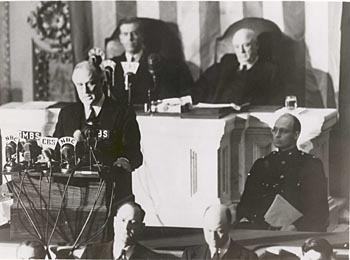1. Qualitative
Click each box to learn about qualitative sources of information.
Qualitative The first type of information we will examine is qualitative. Qualitative forms of information deal with descriptions and data that are observed, but not measured.
The following information is an example of a qualitative form of information:
The United States had not been invaded by a foreign nation since the War of 1812. In many ways, it was not prepared for an attack on American soil. On December 6, 1941, the U.S. intercepted a Japanese message that inquired about ship movements and berthing positions at Pearl Harbor. The cryptologist gave the message to her superior who said he would get back to her on Monday, December 8. On Sunday, December 7, a radar operator on Oahu saw a large group of airplanes on his screen heading toward the island. He called his superior who told him it was probably a group of U.S. B-17 bombers and not to worry about it. The Japanese attack on Pearl Harbor began at 7:55 that morning. The entire attack took only one hour and 15 minutes. Captain Mitsuo Fuchida sent the code message "Tora, Tora, Tora" to the Japanese fleet after flying over Oahu to indicate the Americans had been caught by surprise. The Japanese planned to give the U.S. a declaration of war before the attack began so they would not violate the first article of the Hague Convention of 1907, but the message was delayed and not relayed to U.S. officials in Washington until the attack was already in progress.
These actions by the Japanese led to Franklin Roosevelt's declaration of war against Japan on December 8, 1941, followed by a declaration of war against Germany on December 11, 1941. The United States had officially entered World War II.

President Franklin D. Roosevelt delivered his "Day of Infamy" speech to Congress on December 8, 1941, to urge Congress to pass a declaration of war against Japan following the bombing of Pearl Harbor.
Image credit: The United States National Archives and Records AdministrationOpens a new window





